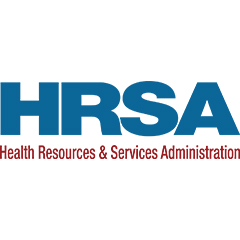For the Health Resources and Services Administration in the Department of Health and Human Services, it didn’t feel the full brunt of the pandemic until Congress allocated more than $175 billion extra to its grant programs.
The move to remote working didn’t impact the bureau. Employees already were used to teleworking to some extent and HRSA had expanded its underlying technology infrastructure before COVID-19 to handle large numbers of remote workers.
Congress, through the CARES Act and other bills, gave HRSA funding for hospitals and healthcare providers to help with the response to COVID-19 and to help cover lost revenue attributable to the outbreak.
Adriane Burton, the chief information officer at HRSA, said the grant programs quickly looked to her office for help in getting the money out the door.
“We had to stand up that program very quickly. What we did is we implemented a contractor owned, contractor operated model. But we also had to complement that service with some of the platform-as-a-service offerings as well to support the Provider Relief Fund,” Burton said on Modernizing Government: How employees can thrive in this hybrid work environment sponsored by KPMG. “Another program that we received was standing up the telehealth.hhs.gov, which was a new site to support HHS and its response to COVID.”
She said the expediting of handing out grant money quickly became an IT issue.
HRSA typically takes 90-to-120 days to distribute grants, but through modernized processes and technology, they reduced that time to as little as five days.
“What we did is we held daily meetings with all those key stakeholders. We learned each time that we disbursed grants for different parts of the organization and we were able to reuse some of those processes,” she said. “We also automated, using some scripts to try to make it easier for folks. We basically save 1000s of hours and reduced grantee burden to actually receive the award. We reduced the time, for instance, for issuing funding memos and various other internal activities. We were really proud of the work that we did.”
Burton said the contractor-owned, contractor-operated model wasn’t necessarily new for HRSA. It just let them bring capabilities to the program areas faster.
“Why build a system when you can use a system that already exists? I mean, that’s one of the foundations for the Federal IT Acquisition Reform Act (FITARA),” she said. “What we did is we actually contracted out that service. We complemented with other services, such as Salesforce for our Performance Reporting System, as well as our case management system. We use Salesforce for our contact center, but we didn’t use it for things such as case management and performance reporting before, so we’re really excited about using that technology and starting to integrate that and some of the other technologies that we have in place, as well as we implemented DocuSign. We were using that for our onboarding process to make it easier as for folks to sign off on all the forms electronically.”
Burton said the experience of rolling out technologies to get grants out the door faster or using electronic signatures will make it hard to back to the old processes and expectations.
A good example that success is the telehealth.hhs.gov website. HRSA already put some of the technology pieces to support site and just had to modify them to meet the needs of the new portal.
“We have our find that health center tool where citizens can go and they could find our health centers that provided COVID testing, as well as telehealth services. Then more recently, HRSA has been involved with the vaccination program, so we’ve updated our tools to reflect some of the new services that we do provide,” she said. “The health center site had geospatial capabilities and we were able to leverage that software for the website.”
Reflections on Remote Work
My staff has been working with program folks to figure out ways to expedite the disbursement of the grants. So typically the grant cycle takes anywhere from 90 to a 120 days. What we did is that we were able to reduce that initially to 18 days for the first round the COVID grants, and then we reduced it to 12 days. Then finally we reduced it to five days. So there's been a lot of activity from an IT perspective and support of the programs.
Adriane Burton
Chief Information Officer, Health Resources and Services Administration, Department of Health and Human Services
Current Workflow Capabilities
I think the whole idea of building systems from scratch as opposed to using something that has the foundational capabilities and then you just add to that and customize it to your environment is going to be key moving forward. People are getting used to things happening at record speed so I think long term will be interesting to see to see how that plays out in regards to rolling out capabilities. I think the doors definitely open for that movement, so it'll be interesting to see how things continue down that path.
Adriane Burton
Chief Information Officer, Health Resources and Services Administration, Department of Health and Human Services
Listen to the full show:
Copyright
© 2025 Federal News Network. All rights reserved. This website is not intended for users located within the European Economic Area.









